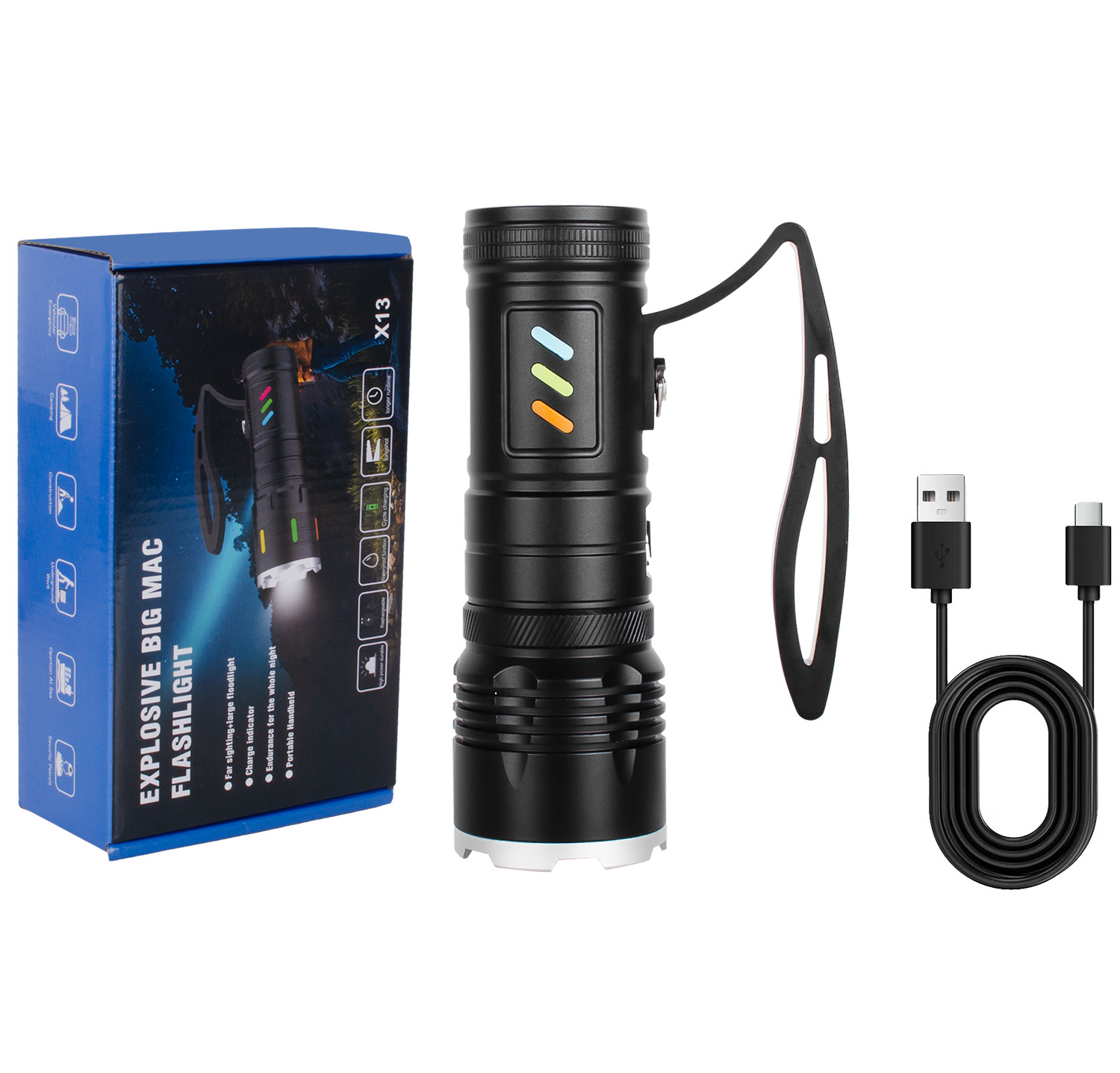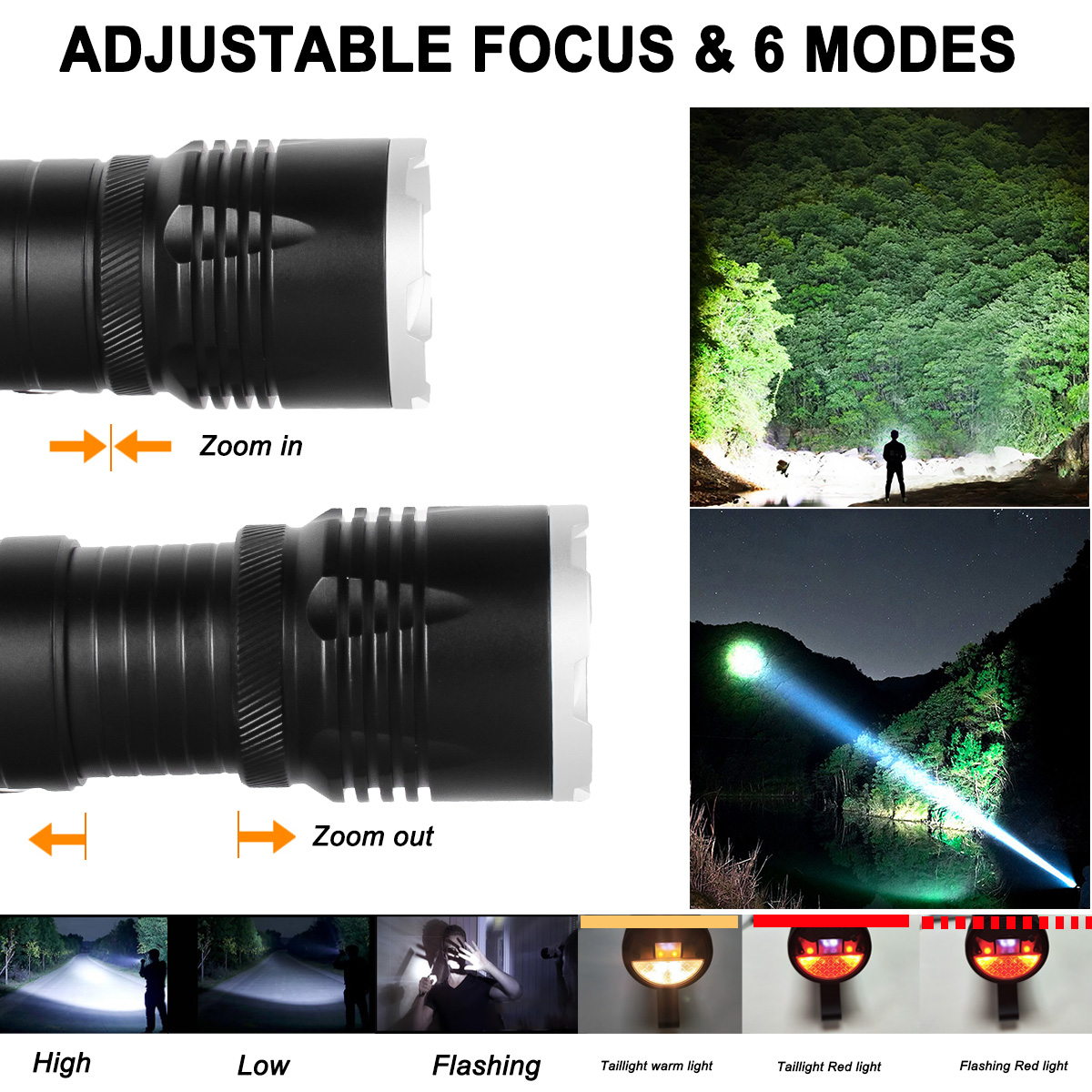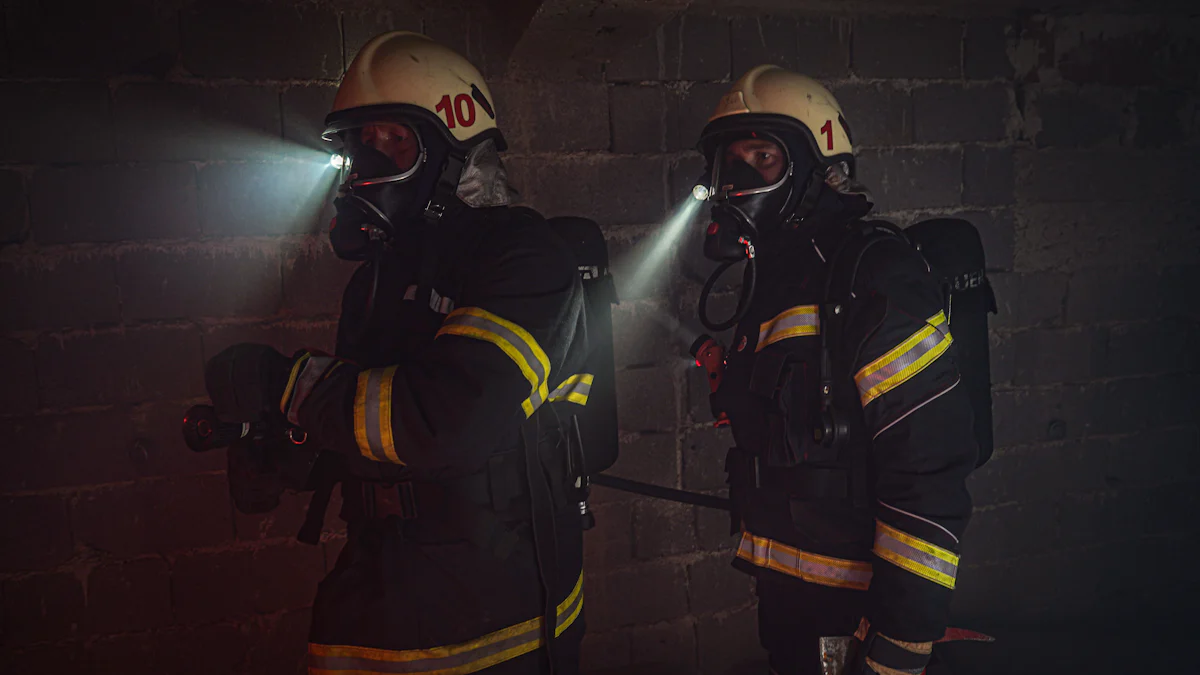Disaster Relief Supplies: Flashlights as a Critical Resource

When disaster strikes, you need tools that ensure safety and visibility. A flashlight becomes your lifeline during a power outage, helping you navigate dark spaces and avoid hazards. It provides more than just light; it offers security and peace of mind in an emergency. Whether you’re searching for supplies or signaling for help, this simple device plays a critical role. Including a flashlight in your disaster relief supplies: flashlights as a critical resource can make all the difference when every second counts.
Key Takeaways
Flashlights are important when power goes out. They help you see and stay safe.
Pick flashlights that are bright and have lasting batteries for emergencies.
Check flashlight batteries often and clean the lens to keep it working.
Have one flashlight for each person in your home emergency kit.
Teach your family how to use flashlights so they can act fast in emergencies.
Why Flashlights Are Critical in Disaster Relief Supplies

Providing Light During a Power Outage
A power outage can leave you in complete darkness, making even simple tasks challenging. Flashlights provide essential emergency lighting, ensuring you can move safely and locate critical items like your first aid kit or disaster supply kit. During disasters, flashlights serve multiple purposes:
Help you navigate safely when the lights go out.
Illuminate surroundings to avoid hazards like debris or sharp objects.
Allow you to signal for help using strobe or SOS functions.
Assist in first aid by providing light to inspect wounds or locate medical supplies.
Offer visibility to prevent accidents in unlit areas.
Modern flashlights often include features like adjustable brightness and long-lasting batteries, making them indispensable in your basic disaster supplies kit.
Enhancing Safety and Navigation
Navigating through disaster zones can be dangerous, especially in low-light conditions. Flashlights improve your safety by illuminating your path and helping you avoid obstacles. They are particularly useful in areas blocked by debris or flooded with water. With a flashlight, you can assess your surroundings and determine the safest route to take.
Flashlights reduce the risk of accidents by highlighting hazards like broken glass or uneven terrain.
They provide visibility in dark environments, ensuring you can move confidently and avoid injuries.
Carrying a flashlight in your disaster relief supplies: flashlights as a critical resource ensures you stay safe while navigating through challenging conditions.
Supporting Emergency Communication and Rescue
Flashlights play a vital role in emergency communication and rescue operations. Their brightness and portability make them effective tools for signaling rescuers or attracting attention. Many flashlights come equipped with SOS or strobe modes, which are designed specifically for emergencies.
Key features that enhance their effectiveness include:
High brightness (measured in lumens) for visibility in dark conditions.
Long battery life to ensure they last throughout the emergency.
Durable and water-resistant designs for use in harsh environments.
Compact size for easy storage in your disaster supply kit.
In addition to signaling for help, flashlights can assist you in locating food, water, or other supplies during a crisis. Their versatility makes them a cornerstone of any emergency preparedness plan.
Types of Flashlights for Disaster Preparedness

Battery-Powered Flashlights
Battery-powered flashlights are among the most common and accessible options for disaster preparedness. These flashlights rely on replaceable batteries, such as AA or AAA, which are widely available in stores. Their affordability makes them a practical choice for budget-conscious individuals. You can easily replace the batteries, ensuring your flashlight remains functional during emergencies.
Advantages of battery-powered flashlights include:
Widespread availability of AA batteries, even during emergencies.
Cost-effective and budget-friendly.
Straightforward battery replacement process.
Compatibility with other devices, allowing you to streamline your battery inventory.
However, these flashlights also have limitations. They often provide lower brightness and shorter runtimes compared to models with specialized batteries. Flashlights requiring multiple batteries may feel bulky, making them less convenient for extended use. Additionally, they may lack advanced features found in high-end models.
Hand-Crank Flashlights
Hand-crank flashlights offer a reliable solution when external power sources are unavailable. These devices generate light through manual cranking, eliminating the need for batteries. This feature makes them invaluable during prolonged power outages. You can rely on them to provide light without worrying about running out of power.
Many hand-crank flashlights also include additional features, such as built-in radios or USB charging ports. These multifunctional tools enhance their usefulness in disaster scenarios. While they require physical effort to operate, their independence from external power sources ensures they remain dependable in emergencies.
Solar-Powered Flashlights
Solar-powered flashlights harness renewable energy from the sun, making them an eco-friendly choice for disaster preparedness. These devices charge during the day and provide reliable lighting at night, even in areas without electricity. By reducing reliance on non-renewable resources, they contribute to environmental sustainability.
Key benefits of solar-powered flashlights include:
Utilization of renewable energy, reducing dependence on traditional power sources.
Zero harmful emissions, making them environmentally friendly.
Reliable performance in remote or disaster-stricken areas lacking electricity.
While solar flashlights depend on sunlight for charging, many models include backup charging options, such as USB ports, to ensure functionality during cloudy days. Their versatility and eco-conscious design make them a valuable addition to your disaster relief supplies.
Specialty Flashlights for Harsh Conditions
When facing extreme environments, you need a flashlight that can withstand harsh conditions. Specialty flashlights are designed to perform reliably in challenging situations, making them essential for disaster preparedness. These flashlights combine advanced technology with rugged construction to ensure durability and functionality.
Modern specialty flashlights incorporate several advancements to meet the demands of disaster scenarios:
LED technology provides brighter and more energy-efficient lighting. LEDs also last longer than traditional bulbs, reducing the need for replacements.
Rechargeable lithium-ion batteries offer extended runtime and lower self-discharge rates, ensuring your flashlight stays ready when you need it.
Smart features, such as adjustable brightness and emergency signal modes, enhance usability in critical situations.
These flashlights often include features tailored for tough environments. Many models are water-resistant or waterproof, allowing you to use them in heavy rain or flood conditions. Others are impact-resistant, designed to survive drops or rough handling. Some even include reinforced casings to protect against extreme temperatures.
When selecting a specialty flashlight, consider the following key attributes:
Brightness: A flashlight with 200-300 lumens works well indoors, while higher lumens are better for outdoor use.
Durability: Look for models with shockproof and weatherproof ratings to handle unpredictable conditions.
Battery life: Long-lasting or rechargeable batteries ensure your flashlight remains operational during extended emergencies.
Specialty flashlights cater to those who prioritize safety and performance. Their robust designs and advanced features make them a reliable choice for disaster relief supplies. By including one in your emergency kit, you prepare yourself for the unexpected and ensure you have dependable lighting in any situation.
Choosing the Best Flashlight for Your Emergency Kit
Key Features to Consider
Brightness and Beam Distance
When selecting a flashlight, brightness and beam distance are critical factors. Brightness, measured in lumens, determines how much light the flashlight emits. For emergencies, aim for a flashlight with at least 200 lumens for indoor use and 500 lumens or more for outdoor conditions. Beam distance, on the other hand, affects how far the light reaches. A longer beam distance helps you navigate large, dark areas or signal for help. Look for models with adjustable brightness settings to adapt to different situations.
Battery Life and Power Source
Reliable flashlights must have long-lasting batteries to ensure they work when you need them most. Choose energy-efficient models with extended runtimes. Rechargeable flashlights are convenient for long-term use, especially those with USB charging options. If you prefer traditional batteries, stock up on extras for your emergency supplies kit. Avoid flashlights with short battery life, as they may fail during prolonged emergencies.
Durability and Weather Resistance
Emergencies often involve harsh conditions, so your flashlight must withstand the elements. Look for models made from rugged materials like aluminum or reinforced plastic. Water resistance is essential, especially in flood-prone areas. Check for an IP rating of IPX4 or higher to ensure the flashlight can handle wet conditions. Impact resistance is another valuable feature, protecting the flashlight from accidental drops or rough handling.
Matching Flashlights to Your Needs
Individual vs. Group Use
Consider how many people will rely on the flashlight. For individual use, compact and lightweight models are ideal. They are easy to carry and store in your emergency supplies kit. For group use, opt for flashlights with wider beams or higher brightness levels to illuminate larger areas. Some models even include multiple light modes, allowing you to switch between focused and wide beams.
Urban vs. Rural Settings
Your environment plays a significant role in choosing the right flashlight. In urban areas, you may need a flashlight with a shorter beam distance but higher brightness for navigating buildings or basements. In rural settings, prioritize models with long beam distances to cover open spaces. Rechargeable flashlights are practical in cities with access to power, while battery-powered options are better for remote areas where recharging may not be possible.
Selecting the right flashlight ensures you have dependable emergency lighting tailored to your specific needs. By considering these factors, you can confidently add a reliable flashlight to your emergency supplies kit.
Maintaining and Storing Flashlights for Emergencies
Regular Maintenance Practices
Checking and Replacing Batteries
Regularly checking your flashlight ensures it works when you need it most. Test it monthly to confirm the light functions properly. Inspect the battery levels and replace them if they are low or expired. For long-term storage, remove the batteries to prevent leaks or accidental activation. Store spare batteries in a cool, dry place to keep them fresh and ready for use.
Cleaning and Inspecting for Damage
Keeping your flashlight clean helps maintain its performance. Wipe the exterior with a soft cloth to remove dirt and debris. Clean the lens to ensure the light remains bright and clear. Inspect the threads and apply a small amount of lubricant to keep the parts moving smoothly. Check the battery compartment for corrosion or damage. If you notice flickering lights or inconsistent brightness, clean the battery contacts or replace the switch if necessary.
Proper Storage Techniques
Keeping Flashlights Accessible
Store your flashlight in a location where you can easily find it during an emergency. Common places include your bedroom nightstand, near doors, or in your car. Keep one in your kitchen or garage for quick access. Regularly test stored flashlights to ensure they work and replace batteries as needed. Designate specific spots for your emergency supplies to avoid misplacement.
Storing in a Safe, Dry Location
Proper storage protects your flashlight from damage. Choose a cool, dry place away from direct sunlight and moisture. Use a protective case or pouch to shield it from dust and impacts. Avoid extreme temperatures, as they can harm the batteries and internal components. If you plan to store the flashlight for an extended period, remove the batteries to prevent leaks. Regularly check stored batteries for signs of corrosion or wear.
Tip: A well-maintained and properly stored flashlight ensures reliable performance when emergencies arise.
Flashlights as Part of Comprehensive Emergency Preparedness
Integrating Flashlights into Disaster Kits
A flashlight is a vital component of any disaster supply kit. It ensures you have reliable light during emergencies, especially when power outages occur. To integrate flashlights effectively into your kit, follow these steps:
Include at least one flashlight for every household member.
Choose models with strobe or SOS functions for signaling help.
Add extra batteries or a backup power source to ensure long-term use.
Opt for durable, weather-resistant designs to handle harsh conditions.
Store flashlights in accessible locations within your emergency supplies kit.
Flashlights also help you navigate dangerous areas, assess safety, and perform first aid in low-light conditions. Their multipurpose functionality makes them indispensable during disasters.
Educating Family Members on Flashlight Use
Teaching your family how to use flashlights ensures everyone can respond effectively during emergencies. Start by showing them how to turn the flashlight on and off. Explain the purpose of different modes, such as strobe or adjustable brightness.
Practice using flashlights in simulated scenarios. For example, guide your family through a dark room to locate essential items like water or food. Emphasize the importance of conserving battery life by using lower brightness settings when possible.
Encourage children to keep a flashlight in their room and teach them how to use it safely. Familiarity with flashlights builds confidence and ensures your family can act quickly during a crisis.
Combining Flashlights with Other Essential Supplies
Flashlights work best when paired with other emergency essentials. Your disaster supply kit should include:
Water for hydration.
Non-perishable food to sustain energy.
First-aid supplies for treating injuries.
A radio for receiving updates.
Extra batteries to power your flashlight and other devices.
These items complement each other, creating a comprehensive emergency preparedness plan. A well-rounded kit ensures you have the tools to stay safe, informed, and ready for any situation.
Tip: Regularly check your kit to ensure all items, including your flashlight, are functional and up to date.
Flashlights remain a cornerstone of disaster relief supplies: flashlights as a critical resource. They provide essential light during a power outage, ensuring safety and functionality in emergencies. Experts emphasize the importance of choosing models with high brightness, durable designs, and reliable batteries. Compact and user-friendly flashlights simplify handling during stressful situations. Including flashlights in your emergency kit, alongside food and water, ensures you stay prepared. Regular maintenance and proper storage keep them ready for use. Prioritize flashlights in your disaster preparedness plan to navigate power outages, signal for help, and stay safe in any situation.
FAQ
What type of flashlight is best for emergencies?
Choose a flashlight with high brightness, long battery life, and durable construction. Models with water resistance and multiple light modes, like SOS or strobe, work well. Hand-crank or solar-powered flashlights provide reliable options when batteries are unavailable. Match the flashlight to your specific needs and environment.
How many flashlights should I include in my emergency kit?
Include at least one flashlight per household member. This ensures everyone has access to light during emergencies. For added safety, keep extra flashlights in key locations like your car, bedroom, or kitchen. Having backups ensures you’re prepared for extended power outages or unexpected situations.
How do I maintain my flashlight for emergencies?
Test your flashlight monthly to ensure it works. Replace low or expired batteries and clean the lens for optimal brightness. Store it in a cool, dry place and remove batteries during long-term storage to prevent leaks. Regular maintenance keeps your flashlight reliable when you need it most.
Are rechargeable flashlights better than battery-powered ones?
Rechargeable flashlights offer convenience and long-term cost savings. They work well in urban areas with access to power. Battery-powered flashlights, however, provide flexibility in remote locations where recharging isn’t possible. Keep extra batteries or a backup power source to ensure your flashlight stays functional.
Can flashlights be used for signaling during emergencies?
Yes, many flashlights include strobe or SOS modes designed for signaling. These features help attract attention from rescuers or others nearby. Use high-brightness settings to increase visibility in dark conditions. Flashlights with long beam distances work best for signaling over large areas or open spaces.
Tip: Practice using your flashlight’s signaling modes before an emergency to ensure you know how to activate them quickly.
See Also
Assessing Key Factors When Selecting Flashlight Suppliers
Investigating Various Scenarios for Flashlight Applications
Exploring Wholesale Flashlights: Tactical, Mini, Headlamps, Lanterns
My Journey to Discovering Trustworthy Wholesale Flashlight Suppliers
